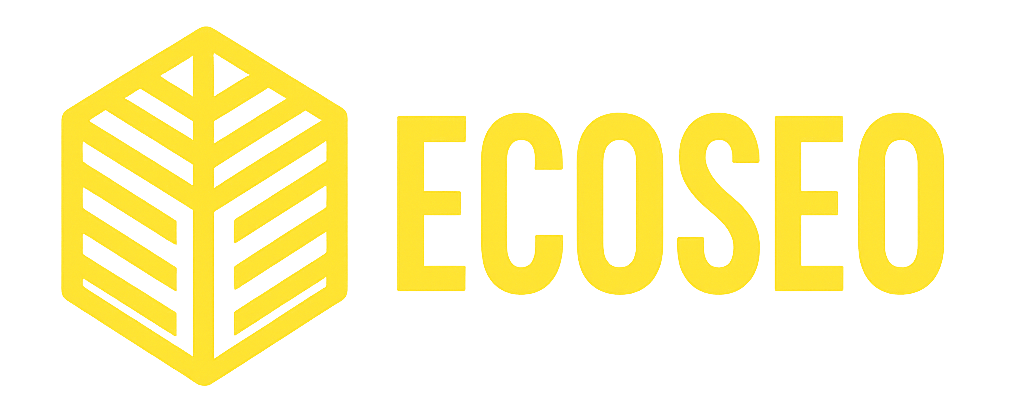How to Optimize for Google E-E-A-T SEO is more than just a trendy topic—it’s a crucial part of creating content that ranks well on Google. E-E-A-T stands for Experience, Expertise, Authoritativeness, and Trustworthiness, and it’s Google’s way of evaluating the quality and credibility of your content, especially for pages that impact people’s health, finances, or safety.
If your goal is to boost your site’s visibility, earn trust from your audience, and stay ahead in competitive search results, then understanding and applying E-E-A-T principles is essential.
In this guide, we’ll break down what each component of E-E-A-T means and show you how to build a content and SEO strategy that aligns with Google’s expectations.

What is E-E-A-T SEO?
It’s a crucial concept in Google’s Search Quality Rater Guidelines, determining how well a page meets users’ needs.
Originally introduced as E-A-T (Expertise, Authoritativeness, Trustworthiness), Google later added “Experience” to emphasize firsthand knowledge of a subject.
E-E-A-T stands for:
Experience
Does the content creator have firsthand experience with the topic? Personal experience adds credibility and real-world insights, improving content authenticity.
Expertise
Does the author have deep knowledge or qualifications in the subject? Google favors content created by industry experts or professionals with demonstrable expertise.
Authoritativeness
Is the website or author recognized as a leader in the field? Backlinks, mentions, and citations from reputable sources strengthen a site’s authority.
Trustworthiness
Can users rely on the content? Trust is built through accurate information, secure websites (HTTPS), clear sourcing, and a transparent author bio.
Google uses E-E-A-T to evaluate the quality of content, especially for YMYL (Your Money or Your Life) topics like finance, health, and safety. Websites that excel in these areas are more likely to rank higher.

Why Does E-E-A-T Matter?
Google uses E-E-A-T to evaluate content quality and reliability. Websites with high E-E-A-T are more likely to rank higher because they provide valuable, accurate, and trustworthy information.
This is especially important for Your Money or Your Life (YMYL) topics like health, finance, and legal advice.
Why is E-E-A-T Important for SEO?
Google’s goal is to provide users with the most relevant and reliable information. Websites with strong E-E-A-T signals are prioritized because they offer value and trustworthiness. This is particularly important for industries where inaccurate information could have serious consequences.
By optimizing for E-E-A-T, you can:
- Improve Search Rankings: High E-E-A-T content, backed by credible sources and reputable backlinks, aligns with Google’s preference for authoritative sites, boosting rankings.
- Build Credibility and Trust with Your Audience: Expert-driven content, verified reviews, and transparent author bios foster confidence, encouraging user loyalty and repeat visits.
- Increase Organic Traffic: Trustworthy, E-E-A-T-optimized content attracts more clicks from search results, driving sustained organic traffic growth.
- Enhance User Engagement and Conversions: Reliable, engaging content increases dwell time and conversions. Research reveals that 68% of people leave websites they don’t trust, while sites with strong EEAT (Expertise, Experience, Authoritativeness, and Trustworthiness) can convert visitors at rates up to 4.5 times higher than those seen on less credible platforms.
- Strengthen Brand Authority: Consistently delivering high-quality, expert content and earning positive mentions cements your brand as a trusted industry leader.
- Reduce Bounce Rates: Content matching user intent and adhering to E-E-A-T standards improves user experience, lowering bounce rates and signaling quality to Google.
- Attract High-Quality Backlinks: In-depth, original content like research reports or guides naturally earns links from authoritative domains, amplifying SEO impact.
- Improve Local SEO Performance: Positive reviews and consistent business information across platforms enhance local search visibility. Customer reviews play a major role in both local search visibility and building trust with potential buyers. Businesses that have a steady stream of positive feedback are significantly more likely to draw in new customers compared to those with minimal or poor reviews.
- Mitigate Algorithm Update Risks: E-E-A-T-focused sites are less vulnerable to Google’s algorithm changes, ensuring stable rankings during updates like core or helpful content refreshes.
- Boost Social Proof and Shares: Trustworthy content and glowing reviews encourage social sharing, expanding your reach and reinforcing authority signals.

How to Optimize for Google E-E-A-T SEO
Google’s search algorithms prioritize content that not only informs but also connects with users through authenticity, expertise, and credibility. Here’s how to embody E-E-A-T in your content:
Showcase Your Experience and Expertise:
Your content should reflect a deep, personal understanding of your topic. Include real-life examples or case studies to demonstrate your firsthand experience.
Whether you’re detailing culinary secrets, explaining tax laws, or discussing business strategies, your expertise should shine through clear, factual content, supported by your credentials or years of experience. Keep your knowledge current by updating your articles to reflect the latest trends or changes in your field.
Example of showcasing your experience and expertise: You run a blog about sustainable living. In your latest post about reducing plastic waste, you share your personal journey over the past year of living plastic-free, including the challenges you faced, innovative solutions you discovered, and how your lifestyle has impacted your health and the environment. You reinforce your expertise by linking to a certification course you completed in environmental science.
Build Authoritativeness with Backlinks:
Authority comes from recognition by others in your industry. Aim to have your insightful articles linked by respected institutions, news outlets, or influential bloggers. Guest posting on reputable platforms, participating in industry events, or collaborating with influencers can lead to these valuable backlinks. Each link from a trusted source is a vote of confidence in your content’s value and your position as an authority.
Example of building authority using backlinks: After writing an in-depth analysis on the future of blockchain technology in finance, you pitch this article to a well-known finance blog for a guest post. They publish it with a backlink to your site. You can also participate in a webinar hosted by a tech conference, where your insights are shared, leading to mentions and links from tech news sites.

Foster Trustworthiness and Transparency:
Trust is built on security, openness, and accuracy. Ensure your site uses HTTPS, provide clear ways for visitors to contact you, and include detailed author bios or company history. When discussing topics like health remedies or economic policies, cite your sources, use testimonials, and ensure your information is up-to-date. Transparency in your methods and motivations helps build a lasting relationship with your audience.
Examples of how to add qualifications to your website to improve trustworthiness: As an example, your website, which offers health advice, always starts articles with a disclaimer about consulting professionals for medical advice. You include a secure contact form where readers can reach out with questions, and your “About” page lists your qualifications as a nutritionist. You also provide references to peer-reviewed studies for any health claims made in your content.
Optimize Your Brand Pages:
Your “About Us” or author pages are vital for establishing credibility. They should narrate your story, showcase your expertise, and highlight achievements or media mentions. A photo from an event or a list of awards can personalize and authenticate your brand’s presence online.
Example of how optimising your most important brand page: On your personal author page for your cooking blog, you include a brief bio highlighting your culinary education from a prestigious institute, awards you’ve won in cooking competitions, and links to your appearances on food-related podcasts or TV shows. You also feature photos of you in action at cooking events, emphasizing your hands-on experience.

Ensure Accuracy:
Inaccurate information can quickly erode trust. Fact-check your content meticulously and regularly reviews and update it to keep it relevant, correcting any misinformation or outdated data.
Example: You maintain a blog on historical events. When writing about a lesser-known historical figure, you cross-reference facts from multiple historical texts, academic articles, and primary sources. You update an older post when new archaeological evidence comes to light, correcting previous assumptions and adding new insights.
Engage Users:
High engagement signals like comments, shares, and time spent on your site tell Google your content is valuable. Write articles that invite interaction, use visuals or interactive elements to make your content more engaging, encouraging users to stay longer and interact more.
Example: Your blog post on DIY home repairs includes a step-by-step video tutorial, encouraging comments for questions or for readers to share their own repair stories. You ask at the end of the post, “What home repair project are you planning next?” This prompt leads to increased comments, shares, and a lower bounce rate, signalling to Google that your content is engaging.
Use Structured Data:
Schema markup is a structured data vocabulary that you add to your website’s HTML to help search engines understand and categorize your content more effectively. By implementing schema markup, such as for events, products, articles, or reviews, you provide explicit context about your content, enabling search engines like Google to display enhanced results, known as rich snippets. These snippets can include details like event dates, product prices, star ratings, or breadcrumb navigation, making your listing more visually appealing and informative in search results.
Rich snippets provide immediate value to searchers by delivering relevant information at a glance, aligning with Google’s emphasis on user-focused content, which supports EEAT principles.

Align with User Intent:
Creating content that directly addresses user search intent, with clear, intent-focused headings and subheadings, ensures your content is relevant, organized, and easy to navigate. This approach involves understanding what users are looking for—whether informational, navigational, or transactional—and structuring your content to answer their queries concisely and effectively.
Your content should directly respond to what users are searching for. Whether they’re looking for “how-to” guides on local crafts or information on South African wines, structure your content to meet these needs with clear, intent-focused headings and subheadings.
Be Active on Trusted Platforms:
Building an online presence beyond your website through contributions to professional networks, publishing on high authority domains, or engaging in relevant forums amplifies your visibility and credibility. By sharing valuable insights, answering questions, or publishing well-researched articles, you demonstrate expertise and establish yourself as a trusted authority in your field. These activities also create opportunities for backlinks, referrals, and networking, which further enhance your reputation.
Your online presence beyond your own site can significantly boost your E-E-A-T. Regularly contribute to discussions on LinkedIn, publish articles on platforms like Medium, or engage in local forums where your expertise can be showcased. This not only drives traffic but also builds your reputation as a thought leader in your area.
Develop Valuable and Informative Content
Creating content that adds value means addressing your audience’s needs, questions, or interests thoroughly. For instance, if your niche is sustainable fashion, you might produce a detailed guide on “How to Build an Eco-Friendly Wardrobe.”
This content would cover everything from material choices to ethical brands, offering actionable advice backed by current trends and data. Use keyword research to understand what your audience seeks, ensuring your content is both relevant and informative.
Maintain Transparency and Share Author Details
Transparency is key to building trust. On your blog or website, include an “About Us” page or individual author bios where you detail who you are, your background, and your passion or expertise in the field.
If you’re discussing sustainable fashion, share your journey towards sustainability, your qualifications, or any relevant experiences like working in the fashion industry or leading a zero-waste lifestyle. Include contact details or social media links to foster a personal connection.

Rely on Trustworthy and Credible Sources
Your content’s credibility hinges on the sources you cite. When you write about the environmental impact of fashion, link to or quote studies from reputable organizations like the United Nations Environment Programme or academic research from environmental science journals.
Always verify your facts with multiple sources to ensure accuracy, which not only supports your content but also builds your site’s authority in Google’s eyes.
Build and Strengthen Brand Reputation
A strong brand reputation can lead to organic backlinks, positive mentions, and increased trust. Engage in activities that reflect your brand’s values; for example, if you’re focused on sustainable fashion, you might host or sponsor local events on sustainable living, collaborate with eco-friendly brands, or be active in community discussions about sustainability. This not only promotes your brand but also establishes you as an authority in your niche.
Track and Utilize User-Generated Content
User-generated content (UGC) can significantly enhance your SEO by providing social proof and fresh, keyword-rich content. Encourage your audience to share their experiences with sustainable fashion on social media or through reviews on your site.
You might run a contest for the best eco-friendly outfit or ask followers to share their upcycling projects. Use this content on your site or social media with permission, always crediting the creators. This shows engagement, supports SEO, and fosters community.
When implementing these strategies, remember:
- Consistency in Quality: Maintain high-quality content across all platforms to reinforce your reputation.
- Local Engagement: If you’re focusing on issues or topics specific to ZA or any location, ask for more details to ensure the advice is relevant to the user’s context.
- Ethics and Permission: Always get permission before using UGC, and respect privacy and copyright laws.
These practices should be part of a long-term strategy to not only improve SEO but also to build a loyal, engaged audience. If you have questions about local specifics or need further customization, please provide more details about your focus or location.

FAQs About E-E-A-T SEO
Is E-E-A-T a direct ranking factor?
No, E-E-A-T is not a direct ranking factor like backlinks or page speed, but it significantly influences how Google assesses content quality, which impacts rankings.
How can small businesses improve E-E-A-T?
Small businesses can focus on showcasing expertise through blog content, earning high-quality backlinks, and building trust with customer reviews and transparent business practices.
Do all websites need to focus on E-E-A-T?
Yes, but it’s especially important for YMYL (Your Money or Your Life) topics, including finance, health, and legal industries.
How long does it take to see results from E-E-A-T improvements?
E-E-A-T optimization is a long-term strategy. Depending on the level of authority and trust you build, results may take a few months to a year.
Does Google favour websites with author bios?
Yes, adding author bios with credentials helps establish expertise and trust, which aligns with Google’s E-E-A-T guidelines.
Final Thoughts
Optimizing for Google E-E-A-T SEO is about building credibility, trust, and authority in your industry. By following these strategies, you can strengthen your website’s reputation and improve search rankings. Prioritize high-quality content, establish expertise, and foster engagement to stay ahead in search results.
If you need expert help improving your E-E-A-T signals and boosting your SEO, contact our SEO agency today!

